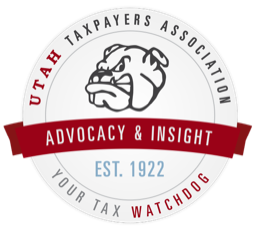Each year during the second week of the Legislative session the Legislature adopts what is called the “base budget.”
Through a series of bills the state lawmakers pass most of the budget so that should there be a hang up at the end of the session, the legislators can adjourn and most of the state budget will be intact. The budget passed this year largely reflects last year’s budget, with some tweaks and changes and is roughly $27 billion. Lawmakers will now spend the rest of the session determining how to spend the new revenue they expect to have for this year.
The budgeting process can be daunting to understand. All 104 lawmakers sit on a budget committee of some kind. The committees focus on different areas of state government for example natural resources, or public education or Economic Development. They meet periodically before the general session to discuss budget issues in those particular areas and then in the first two weeks make changes to last year’s budget and then pass the “base budget.”
Following the base budget process, the committees then get to work determining what items lawmakers should spend the new money coming into the state on for the upcoming fiscal year. Each committee makes a recommendation to the legislature’s Executive Appropriations Committee, which is made up of legislative leadership, who then make the final determination on what gets the new money during the final days of the session.
If it sounds complicated, it is. It is messy and can be tricky for any Capitol Hill veteran to follow.
This process also makes it difficult for lawmakers to make cuts to the budget unless they can quickly identify areas that are glaringly problematic. If there aren’t budget items that are obvious to cut or reallocate then the budgets move forward. This isn’t meant to criticize but rather acknowledge the difficulty of passing a nearly $30 billion budget in a 45-day legislative session.
The good news is that the legislature does try to ensure the budget is widely available to the public. The state’s website: budget.utah.gov can be a great resource to dig into the different areas of the state budget and give every Utah taxpayer the opportunity to put a micro-scope on the budget and identify what is necessary, what is a “nice to have” and what is wasteful.
At our annual Legislative Outlook Conference held at the Little America Hotel in January I got the chance to ask the governor and legislative leaders what can be done to ensure the state government agencies are in check and not wasting taxpayer dollars. All the leaders gave sincere answers that they are working together to control government growth but the truth is, changes won’t come until the public puts greater pressure on the legislature to make cuts.
Lawmakers would argue that they spend a large amount of their time sitting in budget meetings and that they do the best they can and they aren’t wrong. However, more time could be spent examining the state budget. More efforts could be made to keep the spending down.
In 2012 the state budget was around $12 billion. This year the budget will total around $30 billion. While yes the state has grown in that time and the demand for government services has increased, there are still likely plenty of items to scrutinize to determine if Utah is keeping its budget trim and fat free or if there are programs that could be ended and additional money returned to Utah’s taxpayers.
I hope lawmakers find new and creative ways to dig into the state budget in years to come to ensure we aren’t on an automatic path of government growth.
